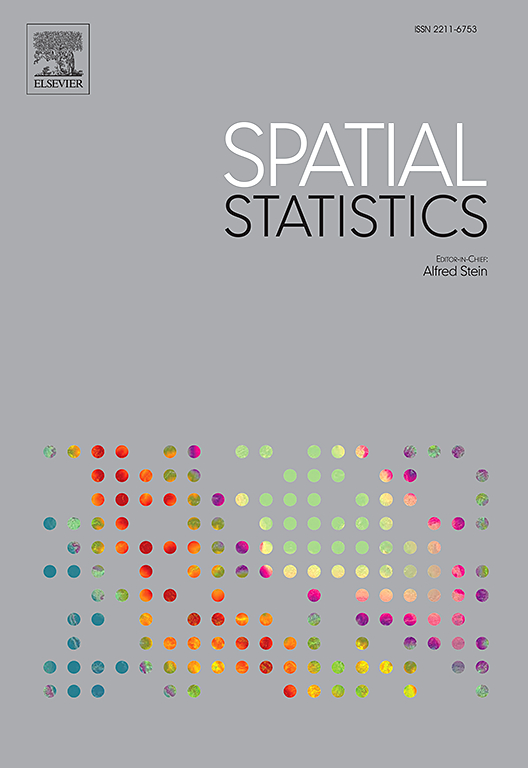Attribute based spatial segmentation for optimising POI placement
IF 2.5
2区 数学
Q3 GEOSCIENCES, MULTIDISCIPLINARY
引用次数: 0
Abstract
Effective spatial planning and resource optimisation require precise demarcation of potential spatial accessible areas and optimal placement of points of interest (POIs). Our approach introduces a novel attribute based spatial segmentation methodology that utilises an iterative clustering approach to create unique macro-regions, each associated with key structural and attribute specific properties. By integrating a probabilistic attribute based structure with k-means clustering, we adaptively segment spatial regions to balance area based attributes and topological characteristics. The full geographical network is segmented into attribute based macro-regions for all spatially accessible and spatially disjoint regions. Attribute based spatial segmentation offers insights into why certain areas may be spatially disjoint and if it is identified as potential spatially accessible areas to determine which POIs can be placed to maximise accessibility. This approach transforms city planning and resource allocation by aligning POI placement with regional needs and characteristics.
基于属性的空间分割优化POI位置
有效的空间规划和资源优化需要精确划分潜在的空间可达区域和最佳的兴趣点(poi)的位置。我们的方法引入了一种新的基于属性的空间分割方法,该方法利用迭代聚类方法来创建独特的宏观区域,每个区域都与关键结构和属性特定属性相关联。通过将基于概率属性的结构与k-means聚类相结合,自适应分割空间区域,以平衡基于面积的属性和拓扑特征。将整个地理网络划分为基于属性的宏观区域,将所有空间可达和空间不相交的区域划分为宏观区域。基于属性的空间分割提供了洞察为什么某些区域可能在空间上不相交,如果它被确定为潜在的空间可达区域,以确定哪些poi可以放置以最大化可达性。这种方法通过调整POI的位置与区域需求和特征来改变城市规划和资源配置。
本文章由计算机程序翻译,如有差异,请以英文原文为准。
求助全文
约1分钟内获得全文
求助全文
来源期刊

Spatial Statistics
GEOSCIENCES, MULTIDISCIPLINARY-MATHEMATICS, INTERDISCIPLINARY APPLICATIONS
CiteScore
4.00
自引率
21.70%
发文量
89
审稿时长
55 days
期刊介绍:
Spatial Statistics publishes articles on the theory and application of spatial and spatio-temporal statistics. It favours manuscripts that present theory generated by new applications, or in which new theory is applied to an important practical case. A purely theoretical study will only rarely be accepted. Pure case studies without methodological development are not acceptable for publication.
Spatial statistics concerns the quantitative analysis of spatial and spatio-temporal data, including their statistical dependencies, accuracy and uncertainties. Methodology for spatial statistics is typically found in probability theory, stochastic modelling and mathematical statistics as well as in information science. Spatial statistics is used in mapping, assessing spatial data quality, sampling design optimisation, modelling of dependence structures, and drawing of valid inference from a limited set of spatio-temporal data.
 求助内容:
求助内容: 应助结果提醒方式:
应助结果提醒方式:


